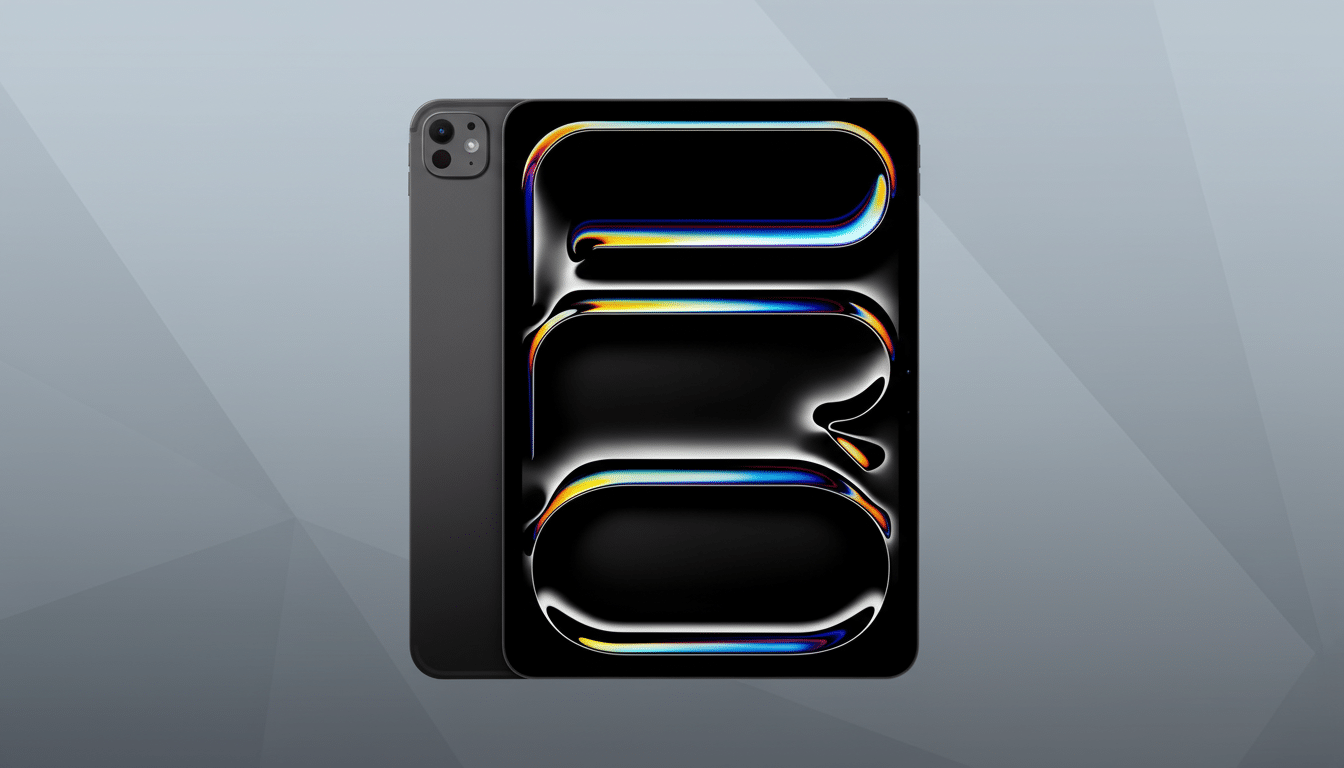Apple Marketing Chief Greg Joswiak has teased that “something powerful is coming” in a post on X showing a blue, V-shaped notebook silhouette. The teaser image has ignited the rumor mill around one unmistakable candidate: a refreshed 14-inch MacBook Pro powered by the next-generation M5 chip. The tease also aligns with a report by Bloomberg’s Mark Gurman that multiple “Pro” designs are in line for introduction.
Individuals briefed on the development say the base 14-inch MacBook model is likely to be the first, followed by M5 Pro and M5 Max versions. There is less information about custom configurations, and sources can’t offer firm updates; the tale surrounds silicon. This strategy follows Apple’s recent rhythm, where simulations and steady progress guide products and cycles when efficiency and performance stay stable.

Reading the tease and Apple’s silicon roadmap for the M5
The V-shaped pose in Joswiak’s reveal reads as a gesture to five, and the silicon roadmap supports that interpretation. Apple promptly followed the M4’s iPad Pro debut with new Mac silicon. How this development plays out depends on fabrication: while there is 2-nanometer chatter, reporting from Nikkei Asia suggests high-volume 2-nanometer is not yet ready, making a refined 3-nanometer process the likely anchor for M5.
On a mature 3-nm node, expect pragmatic gains rather than a fireworks display: mid-single to low-teens CPU improvements at fixed power, with more under sustained loads, and a far bigger GPU jump due to architectural tweaks. TSMC has talked up its N3P class’s improved performance per watt, and Apple has historically layered real-world throughput gains through scheduler, cache, and memory bandwidth optimizations.
To matter in the pro laptop space, M5 must move the needle in creative and code workload areas. The M3 generation brought hardware ray tracing, mesh shading, and dynamic shading; M5 could scale core counts and increase external display bandwidth while matching or even overtaking discrete GPUs on path-traced renders or Resolve’s GPU-accelerated color work—without launching the battery off the nearest cliff.
The Neural Engine will be equally important. Apple made big gains in on-device AI with recent chips, and watchers will look for a higher TOPS figure and better memory fabric for running larger language and diffusion models locally. This will aid macOS features and pro apps from Adobe, Blackmagic, and Apple’s own creative suite, where background upscaling, object removal, and speech isolation now lean on dedicated accelerators.

The Mac may not be alone: signs of an M5 iPad Pro emerge
Supply chain chatter and early unboxing clips out of Russia point to an M5 iPad Pro with at least 12GB of RAM and dual front cameras to preserve eye contact in both orientations. Screenshots circulating from Primate Labs’ Geekbench 6 suggest roughly a 12% multi-core uplift and up to 36% higher GPU scores versus M4-class tablets, though pre-release numbers can shift and are easy to misinterpret.
An updated Vision Pro rounds the watchlist with refinements
An updated Vision Pro is also on the watchlist. Iterations rumored by developers and retail sources center on a more comfortable Dual Knit Band and a Space Black finish, plus an auxiliary R2 chip to streamline sensor and input processing. Wireless specs may stand pat, signaling a focus on comfort and endurance over headline speeds as Apple works to grow a category that trackers like IDC still classify as niche but rising.
How to gauge imminence from filings, channels, and teasers
Several tea leaves point to timing. Apple often clears new Macs via Eurasian Economic Commission filings before sales begin. Channel partners see lead-time shifts on current models. And the company has a habit of dropping spec-bump Pro machines via press release rather than a full stage show. Joswiak’s atypical tease suggests confidence that the silicon story can carry the moment.
Key metrics to watch if it is an M5 MacBook Pro
If the mystery device really is an M5 MacBook Pro, the most critical things to watch are how efficiently it performs under sustained load, how the GPU scales, and what happens with on-device AI acceleration, as well as whether Apple keeps the entry price level.
- Efficiency under sustained CPU and GPU workloads
- GPU scalability and external display bandwidth
- AI acceleration: Neural Engine TOPS and memory fabric
- Entry price stability for the base 14-inch model
The guarantee in the tease is strength; the prospect is the ability to speed up exports, reduce build times, and prolong unplugged sessions for people who buy Pro machines to work as professionals.

